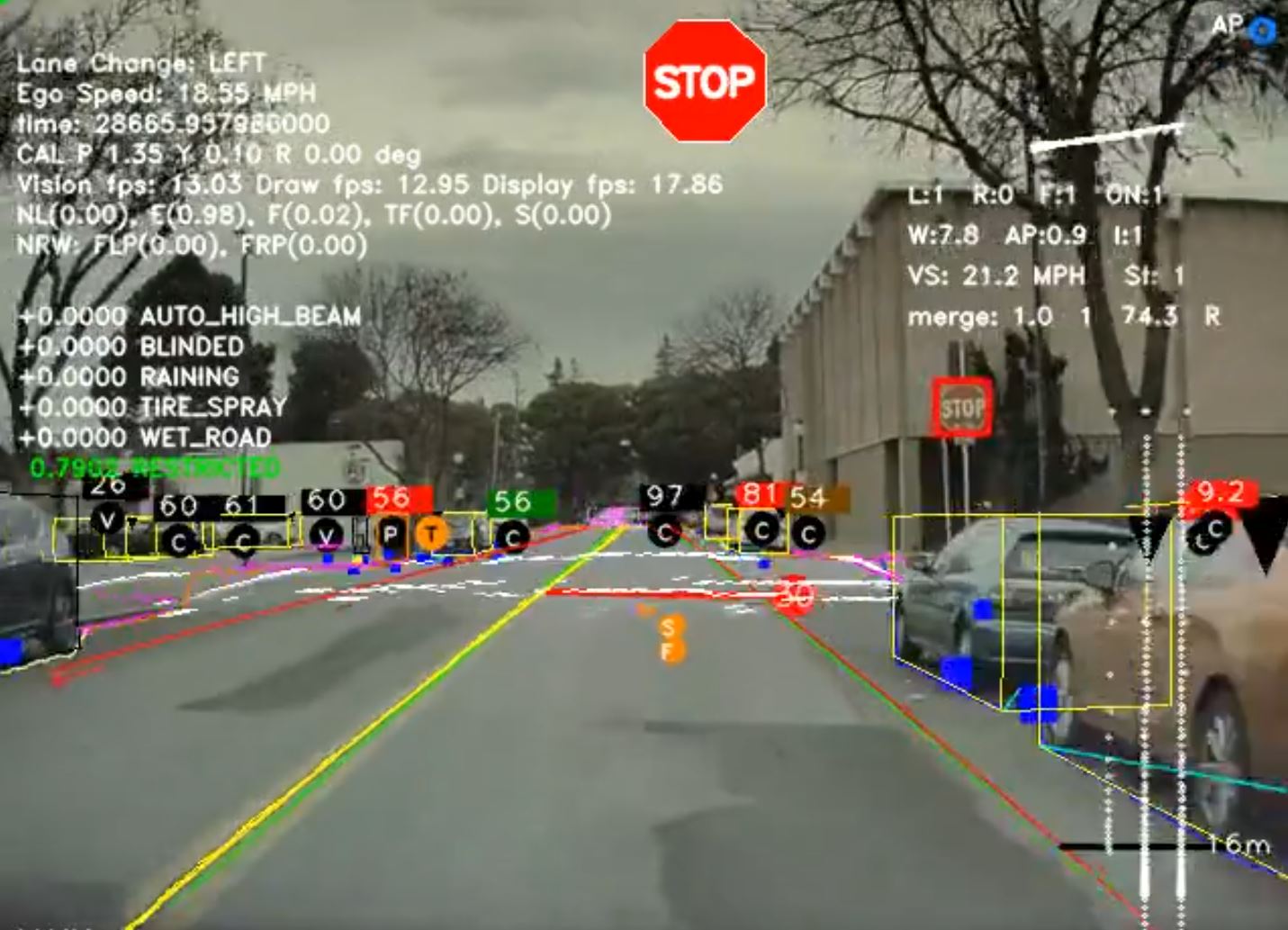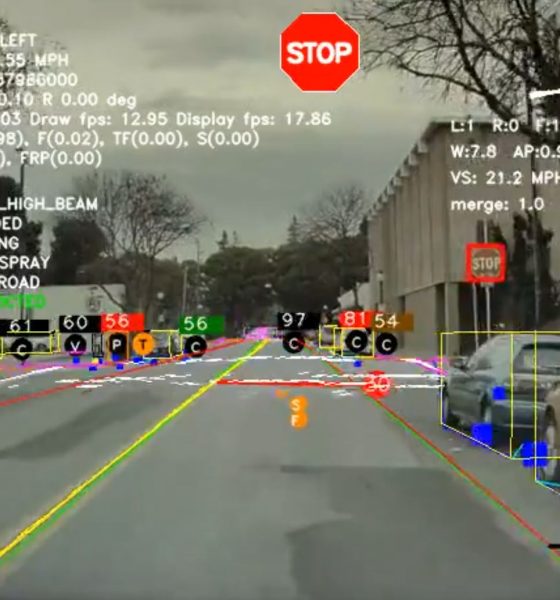

News
Tesla Autopilot’s 4D upgrade could lead to more FSD features
Tesla CEO Elon Musk stated that the company’s Autopilot systems are being upgraded to 4D, which will improve the performance and capabilities of the semi-autonomous driving function. Currently, Autopilot is operating with “~2.5D,” Musk said.
The developments came from a question that was asked by a Twitter follower of Musk’s who has issues using Tesla’s Summon feature on his driveway. Summon allows owners to retrieve their vehicles by using their Smartphones. By holding the “COME TO ME” button within the Tesla app, the car will use GPS vectoring to travel to the location of the phone.
Summon is a part of Tesla’s Full Self-Driving suite. But, the rework of Autopilot’s dimensional upgrade is apart of something much bigger. Perhaps it deals with a complete rewrite of Autopilot that will extend the company’s FSD features.
We need to finish upgrading Autopilot to 4D vs ~2.5D, then it will go up very steep slopes
— Elon Musk (@elonmusk) July 22, 2020
However, the owner stated that the grade of his driveway is slightly steeper than 10%, which inhibits the vehicle from traveling up roads that have inclines. The steepness of the slope, along with normal transitions from a street to a driveway, can present issues for Tesla’s Autopilot. This could be due to the lack of information that Tesla’s Neural Network has for navigating these environments.
With that being said, Tesla is developing a 4-dimensional system for Autopilot. The development of new elements for Autopilot to comprehend the surroundings and road environment of the vehicle could lead to more drastic improvements and an increasingly accurate comprehension of the roads a vehicle travels on.
Tesla’s currently Autopilot suite uses ~2.5D, Musk said. Now, it uses two-dimensional images along with labels, which could account for the around 2.5 dimensions that Musk spoke of in the tweet.

Adding dimensions to the Autopilot system will simply increase the accuracy of how the car reacts in certain situations. Currently, Tesla uses images from Autopilot cameras that are labeled with information. Tesla could use 3-dimensional stereoscopic scenes that are reconstructed from video, along with timestamps to improve accuracy.
A few members of the Tesla community put their two cents in on what the 4-dimensional Autopilot system could entail.
Reddit user u/__TSLA__ stated that curating a massive series of traffic scenarios and objects that a car might encounter during a drive could improve the accuracy of Autopilot and Tesla’s self-driving capabilities.
However, another Reddit user, u/Semmel_Baecker, said that 4D could mean that the Autopilot cameras could build a real-time 3D environment and then predict the movements of labeled objects in 4D based on past behaviors of other vehicles. This strategy would effectively use the Neural Network to learn the reactions of other drivers or objects.
Tesla continues to develop Autopilot behaviors to eventually release a “feature complete” Full Self-Driving suite in the future. The electric automaker continues to release patents that aim to build a more accurate Autopilot system that will accelerate the company’s journey toward Level 5 Autonomy, which Musk says is coming soon.
Most recently, Tesla submitted a patent titled, “Enhanced Object Detection for Autonomous Vehicles Based on Field View,” that would crop important objects in images and increase the resolution of those images. If pedestrians, vehicles, or other objects are available in an image, they would be available at an increased resolution to improve the accuracy of Autopilot.
Tesla’s exact plans for an Autopilot upgrade to 4-dimensional imagery is unknown. The increased accuracy is necessary for the company’s cars to drive in any environment. Tesla will soon release FSD’s “Driving on City Streets” function, which will complete the suite.

News
Elon Musk’s Grokipedia surges to 5.6M articles, almost 79% of English Wikipedia
The explosive growth marks a major milestone for the AI-powered online encyclopedia, which was launched by Elon Musk’s xAI just months ago.

Elon Musk’s Grokipedia has grown to an impressive 5,615,201 articles as of today, closing in on 79% of the English Wikipedia’s current total of 7,119,376 articles.
The explosive growth marks a major milestone for the AI-powered online encyclopedia, which was launched by Elon Musk’s xAI just months ago. Needless to say, it would only be a matter of time before Grokipedia exceeds English Wikipedia in sheer volume.
Grokipedia’s rapid growth
xAI’s vision for Grokipedia emphasizes neutrality, while Grok’s reasoning capabilities allow for fast drafting and fact-checking. When Elon Musk announced the initiative in late September 2025, he noted that Grokipedia would be an improvement to Wikipedia because it would be designed to avoid bias.
At the time, Musk noted that Grokipedia “is a necessary step towards the xAI goal of understanding the Universe.”
Grokipedia was launched in late October, and while xAI was careful to list it only as Version 0.1 at the time, the online encyclopedia immediately earned praise. Wikipedia co-founder Larry Sanger highlighted the project’s innovative approach, noting how it leverages AI to fill knowledge gaps and enable rapid updates. Netizens also observed how Grokipedia tends to present articles in a more objective manner compared to Wikipedia, which is edited by humans.
Elon Musk’s ambitious plans
With 5,615,201 total articles, Grokipedia has now grown to almost 79% of English Wikipedia’s article base. This is incredibly quick, though Grokipedia remains text-only for now. xAI, for its part, has now updated the online encyclopedia’s iteration to v0.2.
Elon Musk has shared bold ideas for Grokipedia, including sending a record of the entire knowledge base to space as part of xAI’s mission to preserve and expand human understanding. At some point, Musk stated that Grokipedia will be renamed to Encyclopedia Galactica, and it will be sent to the cosmos.
“When Grokipedia is good enough (long way to go), we will change the name to Encyclopedia Galactica. It will be an open source distillation of all knowledge, including audio, images and video. Join xAI to help build the sci-fi version of the Library of Alexandria!” Musk wrote, adding in a later post that “Copies will be etched in stone and sent to the Moon, Mars and beyond. This time, it will not be lost.”
News
Tesla Model 3 becomes Netherlands’ best-selling used EV in 2025
More than one in ten second-hand electric cars sold in the country last year was a Tesla Model 3.

The Tesla Model 3 became the most popular used electric car in the Netherlands in 2025, cementing its dominance well beyond the country’s new-car market.
After years at the top of Dutch EV sales charts, the Model 3 now leads the country’s second-hand EV market by a wide margin, as record used-car purchases pushed electric vehicles further into the mainstream.
Model 3 takes a commanding lead
The Netherlands recorded more than 2.1 million used car sales last year, the highest level on record. Of those, roughly 4.8%, or about 102,000 vehicles, were electric. Within that growing segment, the Tesla Model 3 stood far ahead of its competitors.
In 2025 alone, 11,338 used Model 3s changed hands, giving the car an 11.1% share of the country’s entire used EV market. That means more than one in ten second-hand electric cars sold in the country last year was a Tesla Model 3, Auto Week Netherlands reported. The scale of its lead is striking: the gap between the Model 3 and the second-place finisher, the Volkswagen ID3, is more than 6,700 vehicles.
Rivals trail as residual values shape rankings
The Volkswagen ID.3 ranked a distant second, with 4,595 used units sold and a 4.5% market share. Close behind was the Audi e-tron, which placed third with 4,236 registrations. As noted by Auto Week Netherlands, relatively low residual values likely boosted the e-tron’s appeal in the used market, despite its higher original price.
Other strong performers included the Kia Niro, the Tesla Model Y, and the Hyundai Kona, highlighting continued demand for compact and midsize electric vehicles with proven range and reliability. No other model, however, came close to matching the Model 3’s scale or market presence.
News
Tesla Model Y Standard Long Range RWD launches in Europe
The update was announced by Tesla Europe & Middle East in a post on its official social media account on X.

Tesla has expanded the Model Y lineup in Europe with the introduction of the Standard Long Range RWD variant, which offers an impressive 657 km of WLTP range.
The update was announced by Tesla Europe & Middle East in a post on its official social media account on X.
Model Y Standard Long Range RWD Details
Tesla Europe & Middle East highlighted some of the Model Y Standard Long Range RWD’s most notable specs, from its 657 km of WLTP range to its 2,118 liters of cargo volume. More importantly, Tesla also noted that the newly released variant only consumes 12.7 kWh per 100 km, making it the most efficient Model Y to date.
The Model Y Standard provides a lower entry point for consumers who wish to enter the Tesla ecosystem at the lowest possible price. While the Model 3 Standard is still more affordable, some consumers might prefer the Model Y Standard due to its larger size and crossover form factor. The fact that the Model Y Standard is equipped with Tesla’s AI4 computer also makes it ready for FSD’s eventual rollout to the region.
Top Gear’s Model Y Standard review
Top Gear‘s recent review of the Tesla Model Y Standard highlighted some of the vehicle’s most notable features, such as its impressive real-world range, stellar infotainment system, and spacious interior. As per the publication, the Model Y Standard still retains a lot of what makes Tesla’s vehicles well-rounded, even if it’s been equipped with a simplified interior.
Top Gear compared the Model Y Standard to its rivals in the same segment. “The introduction of the Standard trim brings the Model Y in line with the entry price of most of its closest competition. In fact, it’s actually cheaper than a Peugeot e-3008 and costs £5k less than an entry-level Audi Q4 e-tron. It also makes the Ford Mustang Mach-E look a little short with its higher entry price and worse range,” the publication wrote.








